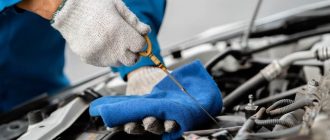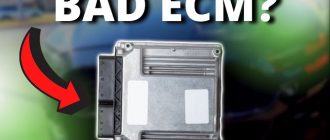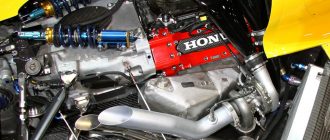What to Do If Car Engine Doesn’t Start
If your car engine doesn’t start, it can be a frustrating experience. However, there are a few things you can do to troubleshoot the problem and get your car up and running again. Here are some of the most common causes of engine starting problems and what you can do to fix them.
1. Dead Battery
One of the most common reasons why a car engine won’t start is a dead battery. This can be caused by a number of things, such as leaving the lights on, forgetting to turn off the engine, or a faulty battery. To check if your battery is dead, you can use a voltmeter to measure the voltage. If the voltage is below 12.6 volts, your battery is likely dead and will need to be replaced.
How to Fix a Dead Battery
- If you have another car, you can jump-start your battery. To do this, connect the positive terminals of the two batteries with a jumper cable, and then connect the negative terminal of the other car’s battery to a metal surface on your car. Start the other car and let it run for a few minutes to charge your battery. Once your battery is charged, you should be able to start your car.
- If you don’t have another car, you can call a towing company to jump-start your battery.
- You can also replace your battery yourself. To do this, you will need to disconnect the negative terminal of the battery, followed by the positive terminal. Once the battery is disconnected, you can remove it from the car and replace it with a new one.
2. Faulty Starter
Another common cause of engine starting problems is a faulty starter. The starter is responsible for turning the engine over, and if it is not working properly, the engine will not start. There are a few things that can cause a starter to fail, such as a bad solenoid, worn-out brushes, or a faulty wiring connection.
How to Fix a Faulty Starter
- If you have a multimeter, you can test the starter to see if it is working properly. To do this, set the multimeter to the ohms setting and connect the probes to the terminals of the starter. If the starter is working properly, you should see a reading of 0 ohms.
- If the starter is not working properly, you will need to replace it. To do this, you will need to disconnect the negative terminal of the battery, followed by the positive terminal. Once the battery is disconnected, you can remove the starter from the car and replace it with a new one.
3. Fuel Problems
If your car is not getting fuel, it will not start. There are a few things that can cause fuel problems, such as a clogged fuel filter, a faulty fuel pump, or a leak in the fuel line. To check if your car is getting fuel, you can remove the fuel line from the engine and see if any fuel comes out. If there is no fuel coming out, you will need to troubleshoot the fuel system to find the problem.
How to Fix Fuel Problems
- If the fuel filter is clogged, you will need to replace it. To do this, you will need to locate the fuel filter and remove it from the car. Once the fuel filter is removed, you can replace it with a new one.
- If the fuel pump is faulty, you will need to replace it. To do this, you will need to locate the fuel pump and remove it from the car. Once the fuel pump is removed, you can replace it with a new one.
- If there is a leak in the fuel line, you will need to repair it. To do this, you will need to locate the leak and patch it up. You can use a fuel line repair kit to do this.
4. Ignition Problems
If your car is not getting spark, it will not start. There are a few things that can cause ignition problems, such as a faulty spark plug, a bad ignition coil, or a faulty wiring connection. To check if your car is getting spark, you can remove a spark plug from the engine and connect it to the ignition coil. If there is spark, you will see a spark when you crank the engine. If there is no spark, you will need to troubleshoot the ignition system to find the problem.
How to Fix Ignition Problems
- If the spark plug is faulty, you will need to replace it. To do this, you will need to remove the spark plug from the engine and replace it with a new one.
- If the ignition coil is faulty, you will need to replace it. To do this, you will need to locate the ignition coil and remove it from the car. Once the ignition coil is removed, you can replace it with a new one.
- If there is a faulty wiring connection, you will need to repair it. To do this, you will need to locate the faulty wiring connection and repair it. You can use a wire connector to do this.
5. Timing Belt/Chain Problems
If the timing belt or chain is broken or damaged, it will prevent the engine from starting. The timing belt or chain is responsible for synchronizing the crankshaft and camshaft, and if it is not working properly, the engine will not be able to run. To check if the timing belt or chain is broken or damaged, you will need to remove the timing belt cover and inspect the belt or chain. If the belt or chain is broken or damaged, you will need to replace it.
How to Fix Timing Belt/Chain Problems
- If the timing belt or chain is broken, you will need to replace it. To do this, you will need to remove the timing belt cover and replace the timing belt or chain with a new one. You will also need to adjust the timing of the engine.
- If the timing belt or chain is damaged, you will need to replace it. To do this, you will need to remove the timing belt cover and replace the timing belt or chain with a new one. You will also need to adjust the timing of the engine.
Conclusion
If your car engine doesn’t start, there are a few things you can do to troubleshoot the problem. By following the steps in this guide, you can identify the cause of the problem and get your car up and running again.




